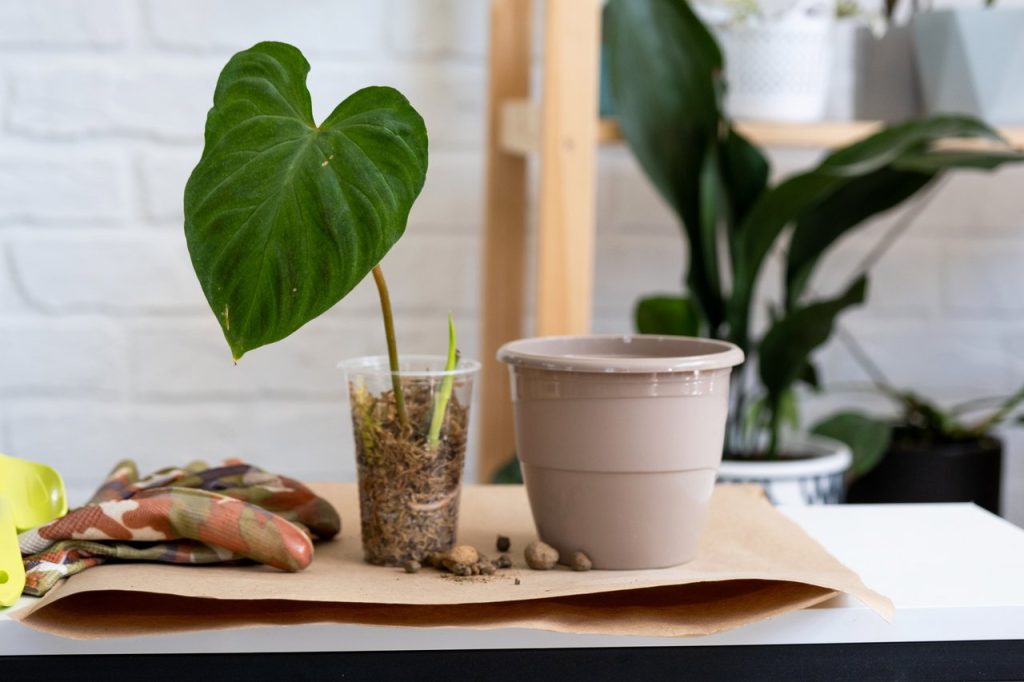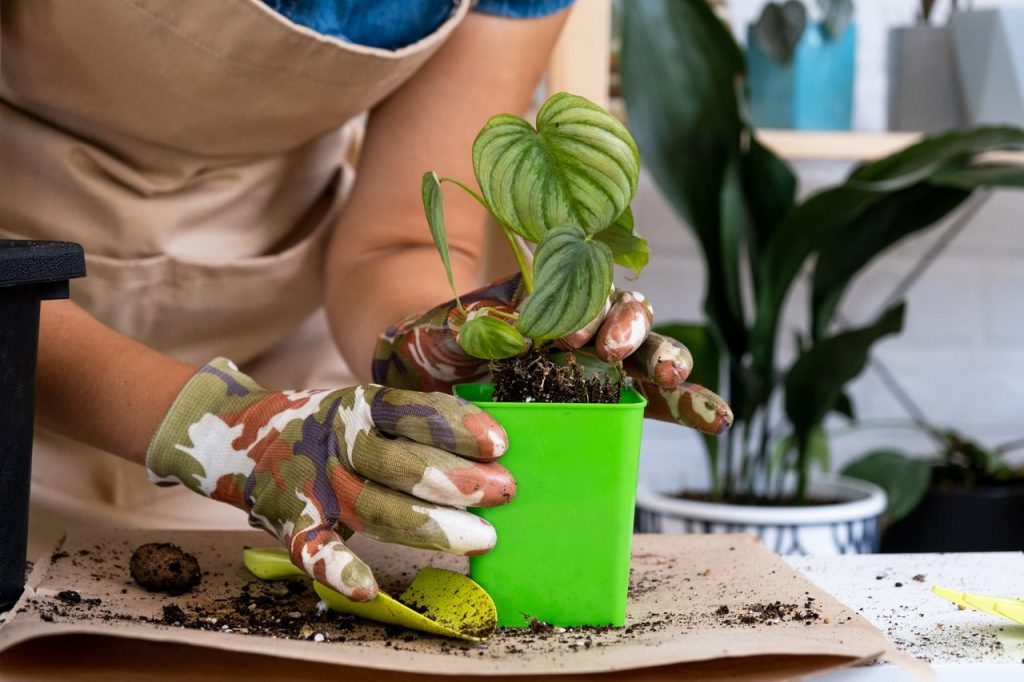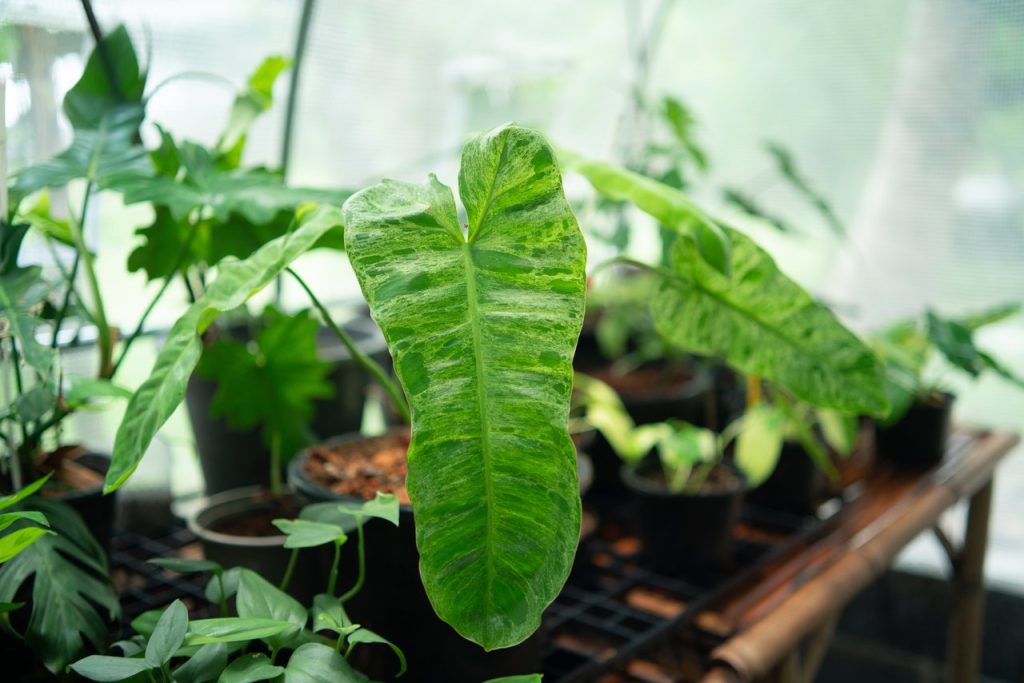Our homes have pretty consistent humidity and temperature conditions throughout, and as a collection grows the water/feed/care that each plant receives becomes fairly consistent. Different species of plants, however, do not have consistent care requirements, so it is perhaps inevitable that certain plants will refuse to thrive in our care.
Below is a list of five plants that, for me, have proved to be far more trouble than their worth.
Philodendron Verrucosum
I’m on my fifth philodendron verrucosum. I can propagate them okay in clear plastic tubs, but as soon as they come out of that ideal 100% humidify environment they just can’t cope. They crisp a bit, the spider mites set in, and there’s nothing I can do at that point.

Verrucosum are reputed to prefer cooler temperature, and I do find they last a little longer in winter in a full sun location. But as soon as summer gets here, and I can’t quite keep the humidity where they seem to like it, it’s game over.
Philodendron Jose Buono
My disappointment with this plant comes more from my misunderstanding about the variegation. I had assumed that the white parts of the leaves stayed white, like they do on a white princess philodendron (ooh that’s another plant I hate) or on a monstera albo. In reality, the leaves fade down to green after just a few months.

It took my specimen a VERY long time to start growing and looking good. It arrived from Enliven in pretty poor condition (I really should have complained) and didn’t grow a leaf for about six months. It arrived pure green, with horrible crinkled leaves, and not a spot of variegation.
I ended up putting it outside, in the Adelaide summer, which for many philodendrons is a death sentence—even with shade cloth protection. Shockingly, it sprung back to life and put out a series of stunning leaves. It is back indoors now and still growing new leaves, but I’m still mad at it.
Alocasia Melo
I generally have pretty good luck with alocasias, so wasn’t expecting to struggle with this one quite so much. My silver dragon, black velvet, jacklyn, cuprea, and pink dragon are all growing great, but this one completely died on me.

I later bought a second one—bigger this time—and it seems to be doing a little bit better. It hasn’t died, but it’s also not really growing. It does have a few pups coming up out of the base, and they seem to be growing, so maybe the issue is an unusual sensitivity to transplant/transport stress?
I’ve read that melo prefers dryer conditions to most alocasia, so perhaps the consistent moisture and high humidity beloved by all of my other alocasias is just not quite what this one is looking for.
Philodendron Mamei/Silver Cloud
Yes, I know these are different plants. The mamei has more elongated and leaves and crawls along the ground, while the silver cloud has rounder leaves and climbs—but only sort of? If you have infinite patience, please explain it to me.

I’ve grouped these together because they suffer from the exact same problem: Spider mites. I have chopped these to the ground, completely replaced the soil, washed them vigorously, and treated with every imaginable insecticide/miticide/holy water combination multiple times and they still end up covered in mites again after a few months.
Philodendron Paraiso Verde
A once-rare plant that has come down in price significantly, the paraiso verde is all over Instagram with its big leaves and striking two-tone green pattern.

Unfortunately, I’ve never even come close to growing one of these successfully. They grow preposterously leggy, even when they’re literally pressed against a window. The variegation—which is apparently heat sensitive—has almost never presented on my specimen.
Greenhouse in summer? Hates it. By a bright window in winter? It melted. In a plastic tub at 100% humidity atop a heat mat and alongside rare anthurium that are thriving? Not a splash of variegation to be seen. This plant truly belongs in the compost bin.

WOW! It sounds like we have had similar situations with “Rare” plants. My list differs a bit from yours, though. I have had GREAT LUCK with both my P. Paraiso Verde & my P. Jose Buono. Like your P Mamei, I have had a HORRIBLE time trying to grow Philodendron Plowmanii. Same thing: Spider Mites! I’ve chopped it down and tried to start again–every single time, it gets infested and never seems to snap back out of it. I’m DONE WITH IT! You mentioned the White Princess. I don’t have that one but, I’ve had success with P. White Wizard. Pink Princess has struggled, though. Chopped it and it now looks fairly good! Alocasias are also hit and miss for me. My best growing ones are by far Alocasia Longiloba & A. Odora “Batik”.
Thanks for your honesty in your post! I hope it will be a heads-up for anyone thinking all these plants are easy to grow and/or should expect them to always be amazing specimens. Since I managed to kill my rarest Philodendrons: (Red Congo Variegated & Caramel Marble), I now do NOT spend hundreds of dollars on starter plants, rooted cuttings or Tissue Culture Vials. If I can pick them up for not more than $70.00, then I’ll consider it!